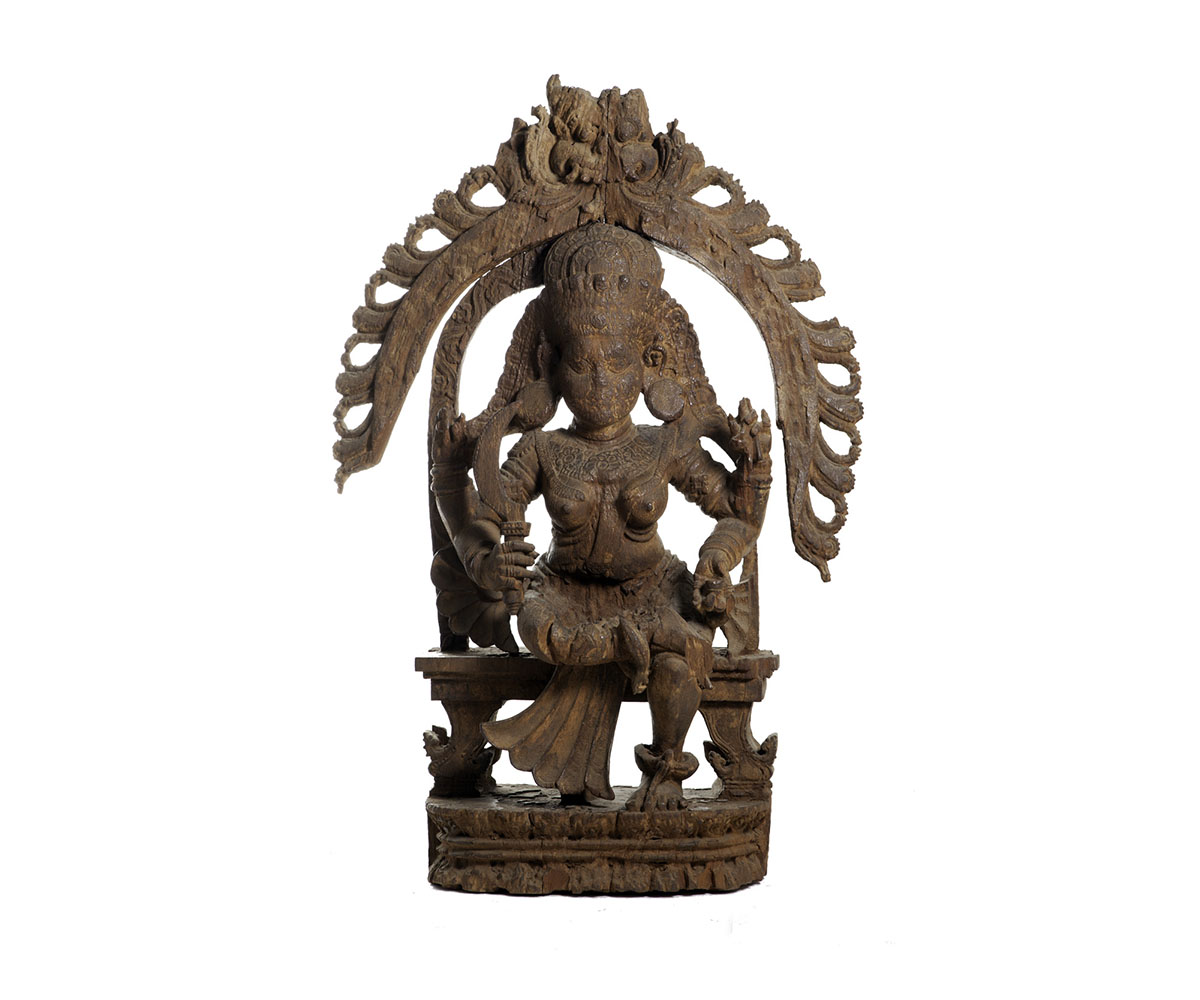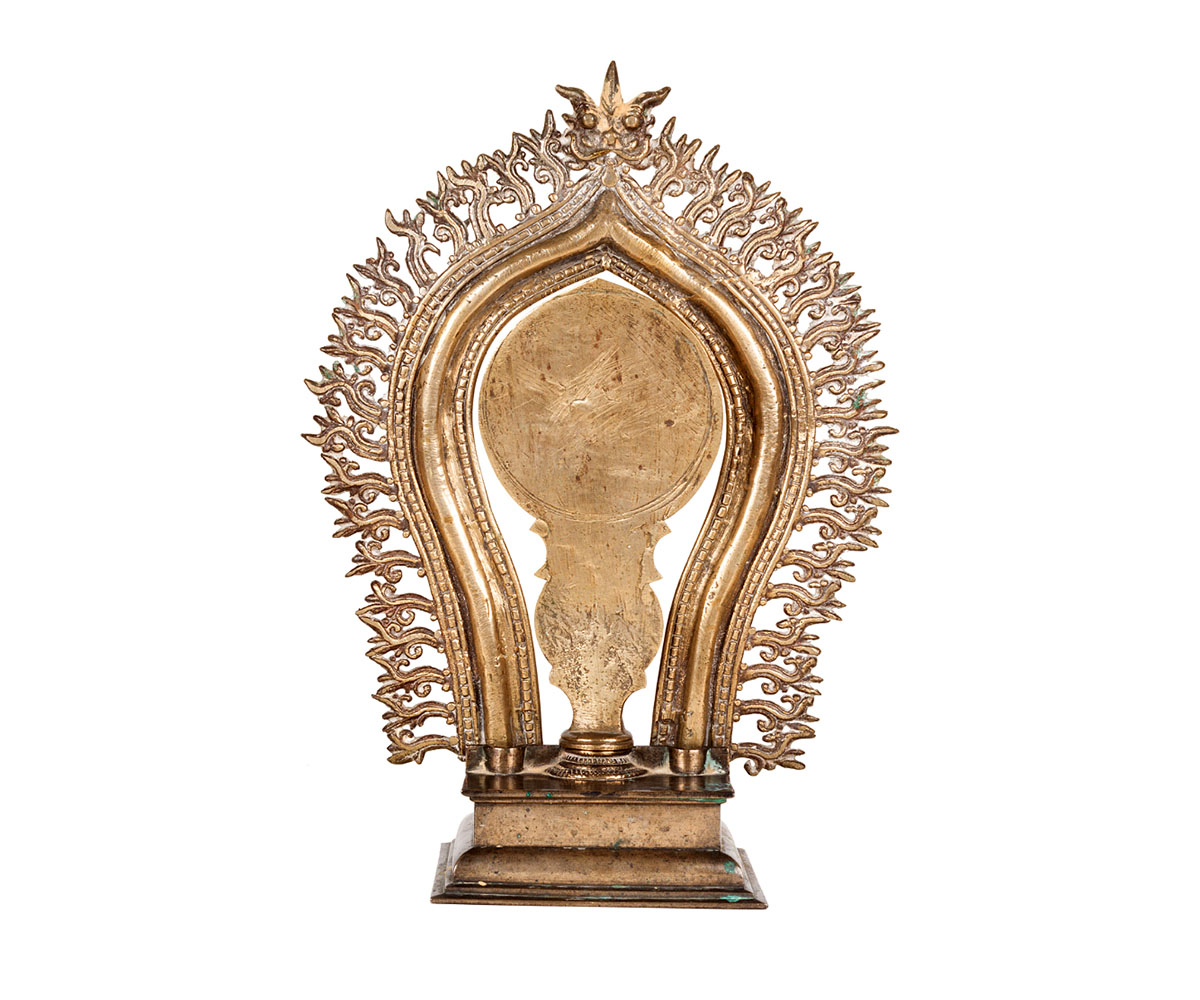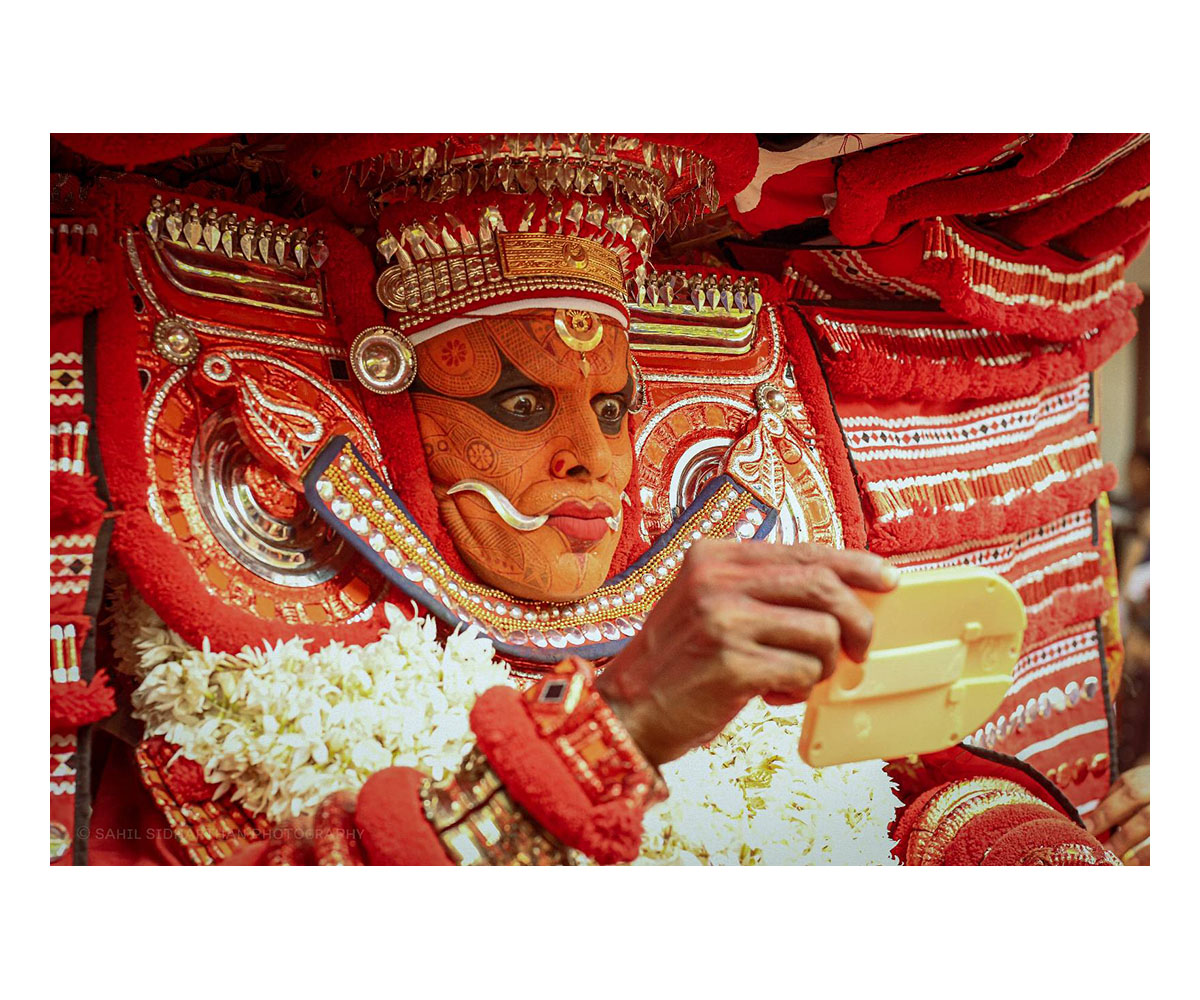PERSPECTIVES
Seeing Yourself in the Divine: The Sacred Mirrors of Kerala
Would you associate an object as mundane as a mirror with a divine presence?
An integral part of the ritual and ceremonial landscapes of Hinduism in Kerala, mirrors serve as far more than reflective surfaces. Transformed from an everyday fixture into an auspicious object representing the manifestation of divinity, these polished metal mirrors of the Malabar region are imbued with ritual significance and symbolic meanings.
In shrines and temples across the Malabar region, we see mirrors being worshipped as a manifestation of the mother goddess Bhagavati or Bhadrakali. Bhadrakali is a popular form of Kali and is usually portrayed as a fierce and wrathful deity in a popular local legend, Darika-vadham. Described in the regional text Bhadrakali Mahatmya and transmitted through active oral and performance traditions, the story chronicles how Darika, a demon, was granted the boon of omnipotence and immortality by the god of creation, Brahma. When the demon went on a killing spree, Shiva created Bhadrakali from his third eye to quell the demon.
In her mirror form, the deity is known as ‘Kannadi Bimbam’ or ‘mirror-idol.’ Bhadrakali’s terrifying form was considered too powerful to gaze upon directly and so, to dilute the strength of her fury and its impact upon the worshipper, her powers are contained through her form as Kannadi Bimbam. The icon is shaped peculiarly, with an almost humanoid form — a leg-like handle and round disc-shaped head are placed on a pedestal that is surrounded by a prabhavali (halo), with a kirtimukha (a terrifying guardian deity) on top. During the nine-day festival of Puram, the Kannadi Bimbam is taken out of the temple in a processional ceremony and given a ritual bath called a puram kuli.
Cast by the Musaris, the traditional metal craftspeople of the region, the mirror acts as a conduit through which one realises the innate presence of the goddess in everything — including themselves. It serves as both the deity, as well as the medium through which her divinity is transmitted to the worshipper. Seeing one’s reflection in the sacred mirror is regarded as a metamorphosis. The act of gazing into it blurs the lines between the self and the god and is the realisation of the divine within.
In parts of Kerala, mirrors also hold important ceremonial value. They are closely linked to performance traditions such as Theyyam, and martial arts such as Kalaripayattu. As part of their ritual practices, Kalari practitioners set up a mirror in the corner of the arena, along with a sword and shield, and offer prayers to it before a performance. During the initial stages of a Theyyam performance, the performers dress themselves as gods, in elaborate costumes and jewellery. Once their physical or external form is transformed into the deity through their dress, they hold up a mirror, known as the ‘nookodi’, and gaze into it. This act of looking at the self, helps the performer to invoke and come into their internal transformation into the deity.
One of the eight auspicious objects, or ashtamangala used in Hindu ceremonies in Kerala is a special hand-held mirror known as val kannadi or aranmula kannati which occupies an important place in various rituals marking important life events. Crafted in the small town of Aranmula by Musari artisans, these mirrors are made using a bronze alloy that remains an exclusive secret. During the Vishu festival that marks the day when farmers sow the first of their seasonal paddy, children participate in the vishukkani, a ritual viewing of oneself in the mirror. They are taken blindfolded into a room and the first things they see are the eight auspicious objects that bring good luck and prosperity, one amongst them being the mirror, and thus, themselves.
Considered superior to modern-day mirrors, val kannadi mirrors are also an integral part of a bride’s trousseau and are gifted to her by her mother as an auspicious gift on her wedding day. Traditionally, they were important objects present at every major ritual occasion for a Hindu woman, including her naming ceremony, first rice feeding ceremony (when a child eats their first morsel of solid foods), ear piercing ceremony, her wedding and her pregnancy rites.
While mirrors are integral to rituals, they also serve as a means for self-reflection. They hold deep spiritual meaning and evoke the Upanishadic aphorism ‘tat tvam asi’ or ‘thou art that’— a signifier for oneness between the self and the universe. Understanding how materials, such as these mirrors, are used in religious and cultural practices, also helps us trace their iconographic significance and their place in the art history of that region.
Bibliography
Goswamy, BN. “Reflections on Divinity.” Tribune. December 9 2007. https://www.tribuneindia.com/2007/20071209/spectrum/art.htm.
Vinay, Harsha. “Mirrors of Malabar.” Hindu. September 2019. https://www.thehindu.com/society/history-and-culture/mirrors-of-malabar/article29468397.ece.
“Can I See Myself in the Mirror of Kali?” Reflections of India. October 2014. https://reflectionsofindia.com/tag/kannati-bimbam/.
Srinivasan, Sharada. “Metal Mirror Marvel of Aranmula.” Sahapedia. July 2021. https://www.sahapedia.org/metal-mirror-marvel-aranmula.









